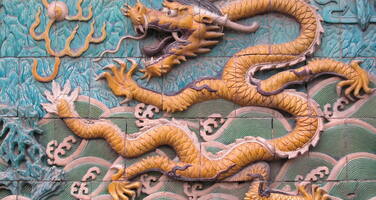Imperial Palaces of the Ming and Qing Dynasties in Beijing and Shenyang
Factors affecting the property in 1994*
- Air pollution
- Erosion and siltation/ deposition
International Assistance: requests for the property until 1994
Total amount approved : 0 USD
Missions to the property until 1994**
Information presented to the Bureau of the World Heritage Committee in 1994
The Imperial Palace, or Purple Forbidden City, is the largest Palace in the world. It receives 7-8 million visitors per year, which necessitates an extensive maintenance of its brick pavements. The mission discussed the increasing erosion of the carved marble balustrades, which is thought to be the result of air pollution, and fire-control measures, which are being installed. It was disappointing to note that the recommendation of the 1988 mission, viz. that only traditional paints be used in restoration work, has not yet been adopted.
The mission visited some very interesting restoration work at two ranges of eunuchs's quarters at the north of the Palace, which demonstrated a variety of timber repairs and traditional roofing techniques. Following a discussion of this work and proposed conservation schemes for a number of monuments on the tentative list, it was agreed that it would be desirable to hold a National Training Workshop in timber conservation, to investigate the calculation of the structural strength of timber buildings, biological deterioration and new jointing techniques for timber member in tension.
Both at the Imperial Palace and at the Great Wall there is an obvious need for the introduction of computer-assisted recording systems.
Summary of the interventions
Decisions adopted by the Committee in 1994
18 BUR VI.B
Great Wall; Imperial Palace of the Ming and Qing Dynasties; Mausoleum of the First Qin Emperor; Mogao Caves; Peking Man Site at Zhoukoudian (China)
The Bureau was informed about the results of a World Heritage Centre monitoring mission to the existing five cultural World Heritage Sites in China, namely the Great Wall, the Imperial Palace of the Ming and Qing Dynasties, the Mausoleum of the First Qin Emperor, the Mogao Caves and the Peking Man Site at Zhoukoudian. The mission had been generally impressed with the standard of maintenance of Chinese World Heritage sites and the professionalism of the staff responsible for them. Nevertheless, the mission had been able to raise specific technical issues with the State Bureau of Cultural Relics and other responsible authorities in China, in particular the need for training in techniques for the conservation of ruined stonework, the conservation of earthen structures, the conservation of marble, new jointing techniques for timber conservation, the conservation of wall paintings, computer-assisted recording of standing monuments and geophysical archaeological recording techniques. The mission had pointed out that monitoring was a two-way process and that the representatives of the state party whose sites were being monitored could often provide invaluable technical information which was relevant to World Heritage sites in other countries. With regard to the management of World Heritage sites in China, the report dealt with tourist facilities, visitor pressures and intrusive structures in the World Heritage sites, a number of them erected since inscription.
The Representative of China expressed his thanks for the work of the mission and explained that a number of the technical points raised by the mission had also been matters of concern for Chinese experts, about which the State Bureau of Cultural Relics was already in contact with provincial and other responsible authorities. China was attempting to ensure that conservation work conformed to accepted international standards. He said that cultural heritage was of increasing public interest in China, which made the work of the mission particularly useful. He welcomed the fact that the mission had been able to clear up a number of misunderstandings about plans for the Mogao Caves, for which there had been concern both within and without China. He looked forward to the results of the mission being made available in the form of a written report.
In response to a request made by the Representative of Thailand, the Director of the World Heritage Centre stated that he would liaise with the Chinese authorities and the members of the mission in the hope that its results could be made available in time for the next meeting of the Bureau. He looked forward to a follow up in the form of further liaison between the Centre and the Chinese authorities and reported that he had already received requests for technical assistance in connection with the training needs identified by the mission.
Exports
* :
The threats indicated are listed in alphabetical order; their order does not constitute a classification according to the importance of their impact on the property.
Furthermore, they are presented irrespective of the type of threat faced by the property, i.e. with specific and proven imminent danger (“ascertained danger”) or with threats which could have deleterious effects on the property’s Outstanding Universal Value (“potential danger”).
** : All mission reports are not always available electronically.


